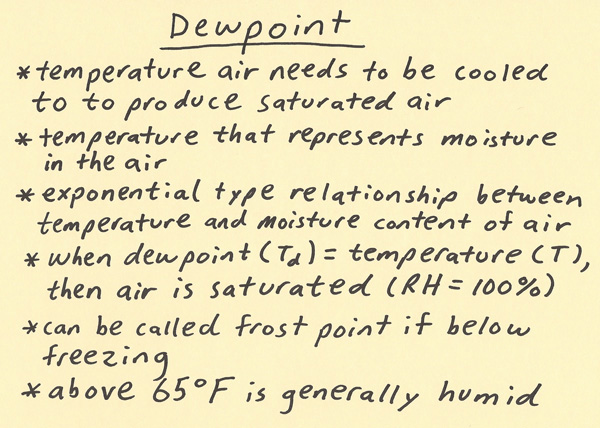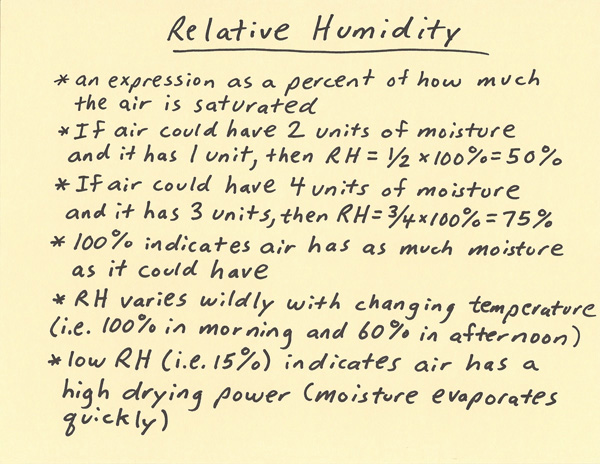
HABYTIME MINI LECTURE 14: DEWPOINT
AND RELATIVE HUMIDITY
| |||||||||||||||||||||||||||||||||||||||||||||||||||||||||||||||||||||||||||||||||||||||||||||||||||||||||||||||||||||||||||||||||||||||||||||||||||||||||||||||||||||||||||||||||||||||||||||||||||||||||||||||||||||||||||||||||||||||||||||||||||||||||||||||||||||||||||||||||||||||||||||||||||||||||||||||||||||||||||||||||||||||||||||||||||||||||||||||||||||||||||||||||||||||||||||||||||||||||||||||||||||||||||||||||||||||||||||||||||||||||||||||||||||||||||||||||||||||||||||||||||||||||||||||||||||||||||||||||||||||||||||||||||||||||||||||||||||||||||||||||||||||||||||||||||||||||||||||||||||||||||||||||||||||||||||||||||||||||||||||||||||||||
METEOROLOGIST JEFF HABY
Dewpoint is an important variable to describe the weather since it gives important information about how much moisture is in the air. Dewpoint
is the temperature that air needs to be cooled to in order to produce saturated air. When the air is saturated then the temperature (T) will
equal the dewpoint (Td). The dewpoint is a temperature and the term temperature is used with dewpoint since the units of dewpoint are the
same units used for the temperature on a thermometer. There is an exponential relationship between temperature and the amount of
moisture that can be in the air. Thus, warm air has the potential to have far more moisture in the air compared to cold air. This
is one reason that rainfall can occur at a heavier rate in warm air than rainfall or snow in cold air. The dewpoint can be called
the frost point in air that is below freezing. A common experience that people have with the dewpoint and the frost point is the
moisture that can be on the ground in the early morning that is not the result of precipitation. At night is when the temperature
is most likely to drop to the dewpoint. Once the temperature and dewpoint are equal then moisture can begin to start condensing out
of the air and onto the ground. When the temperature is below freezing then frost can form. When the dewpoint increases above 65 F
it will generally feel humid outside. It will feel especially humid when the dewpoint increases above 70 F. This humidity can make
the air feel warmer (since the body is less able to cool itself through evaporative cooling from sweat).

Relative humidity is expressed as a percent. The lowest possible value is 0% and the highest value of 100% indicates the air is saturated. A
value of 50% would indicate the air has half as much moisture as it could have. A value of 75% would indicate that the air has 3/4ths of
the moisture that it could have. Relative humidity is temperature dependent. Thus, the same amount of moisture in the air
can produce vastly different relative humidities depending on the temperature of the air. A relative humidity of 100% in cold air
will have much less moisture than when the relative humidity is 100% in warm air. As the temperature changes during the day, the
relative humidity will change. Relative humidity is typically highest in the early morning (since temperature falls closer to the
dewpoint overnight) and relative humidity is typically lowest in the afternoon (since temperature increases farther from the dewpoint
due to solar radiation warming). A low relative humidity indicates the air has a high drying power. It is easier to cool off when
the air is dry since sweat and water evaporates quickly from the skin and evaporation is a cooling process. It is harder to cool
off when the temperature and relative humidity are high since warm/moist air does not allow a rapid evaporation
of moisture from the skin.

|
|
|


